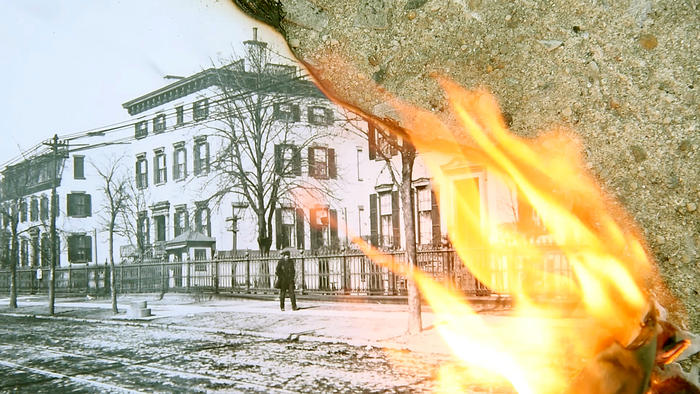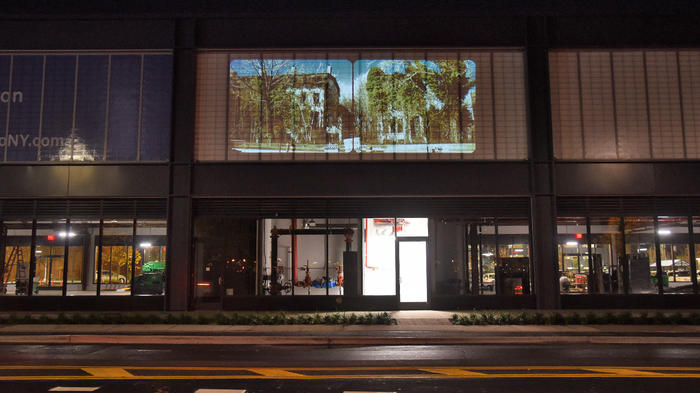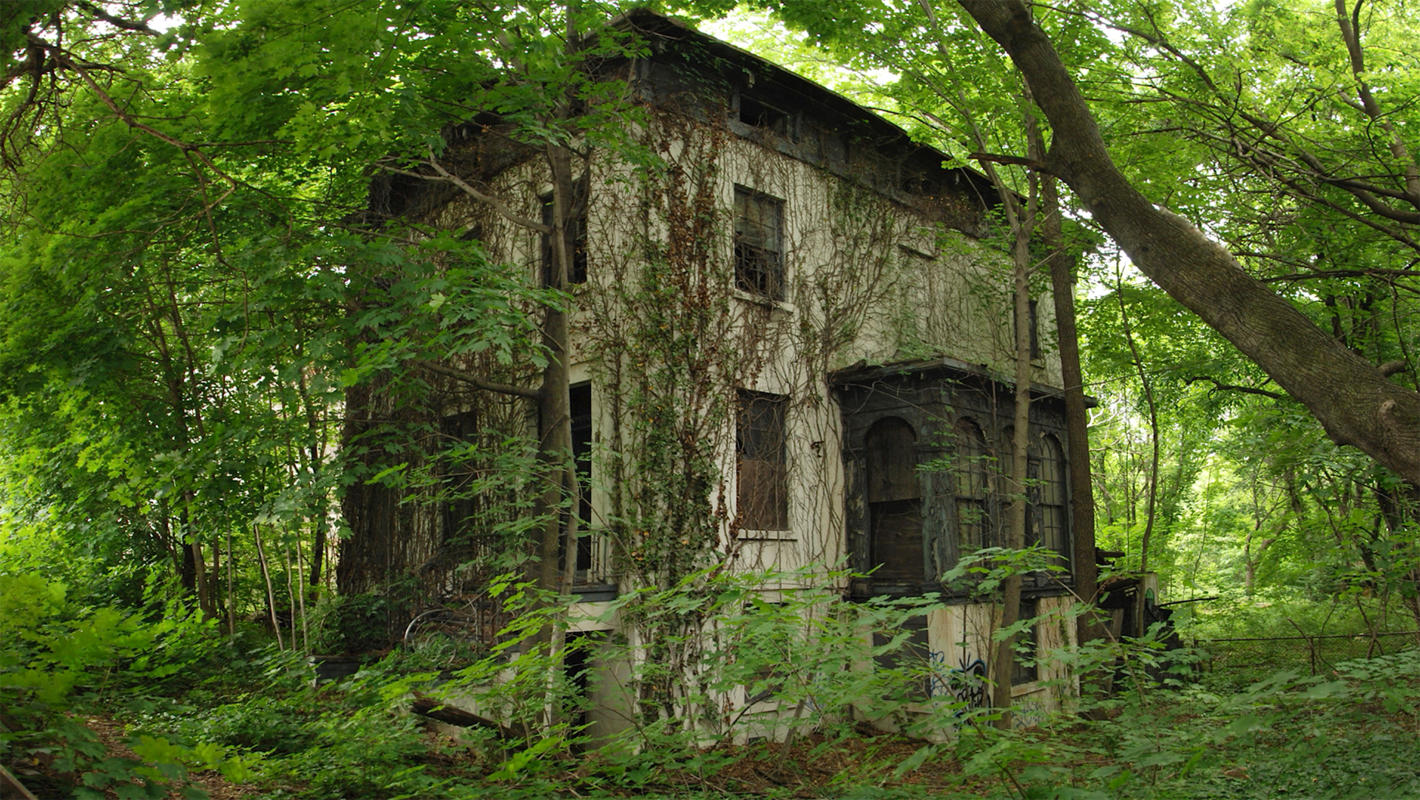The destruction of Admiral’s Row, an abandoned stretch of nineteenth-century houses, and the site’s transformation into a Wegman’s grocery store are the subject of Urban Growth, a new documentary by photographers and filmmakers Nathan Kensinger and Nate Dorr. The moving short film is crafted with historical images and footage collected by Kensinger and Dorr over the last fifteen years as the site evolved from an industrial waterfront to a modern New York City neighborhood.
Admiral’s Row, or Officer’s Row, was located at the edge of the Brooklyn Navy Yard. Constructed between 1864 and 1901, mansions housed Navy officers and their families. The homes were occupied until the late 1970s. After the last families moved out, the homes were left abandoned for decades. The Army National Guard made the call to demolish the buildings in 2009.
 Still from Urban Growth, directed by Nate Dorr and Nathan Kensinger
Still from Urban Growth, directed by Nate Dorr and Nathan Kensinger
“I feel personally connected to any place in the city that’s allowed to run wild for years!,” filmmaker Nate Dorr says of his initial attraction to the site, “I worked in the Navy Yard for a while, concurrent with the demolition, but I’d been fascinated by the site since I first saw it from the street fifteen years ago.” Kensinger and Dorr started to collect footage for the Urban Growth documentary in 2008. “We were initially inspired to capture the wild-growing landscape there, but when we realized that the mansions and forest might be bulldozed by the city, we decided we needed to chronicle that transformation,” Kensinger told Untapped New York. The protests of preservationists eventually led to the salvage of two buildings at the site, but the rest were demolished and replaced by a Wegman’s grocery store between 2016 and 2019.
In the film, Dorr and Kensinger take viewers inside the derelict homes of Admiral’s Row. “Filming inside the mansions of Admiral’s Row was pretty magical,” Kensinger recalls, “They still had so many original details, including chandeliers and woodwork. Wandering through the rooms, you could really get a sense of what the homes might have been like when they were still inhabited.” Though New Yorkers today will never get to visit lost buildings, Dorr hopes the film will allow viewers to experience a bit of “the unique feeling of actually walking through the overgrown grounds, touching old moldings and doorframes, climbing the stairs to a third floor with the roof peeled back and bows of trees spilling in around you.”
 Still from Urban Growth, directed by Nate Dorr and Nathan Kensinger
Still from Urban Growth, directed by Nate Dorr and Nathan Kensinger
As Admiral’s Row sat abandoned, nature was allowed to take over. “It was a big tract of land, and once inside, the rest of the city just disappeared,” Dorr remembers. “The century-old forest around [the buildings] was such a unique place, filled with birds, flowers and butterflies,” Kensinger adds, “That made documenting their destruction even more difficult because it was sad to see such a special landscape being ripped to the ground.”
The fate of Admiral’s Row serves as a cautionary tale for New Yorkers who may not be aware of the historic structures being lost to new development. In the documentary, you see the site as it originally was, during its demolition, and what is on the site now. “On the night of the opening of the supermarket and parking lot that now fill the site,” Dorr recalls, “we projected an earlier version of the film directly onto the new buildings. People walking by, who had just been shopping and presumably lived nearby, would sometimes ask us where the film had been shot, not realizing it was right there. The city changes quickly and has a short memory.”
 Still from Urban Growth, directed by Nate Dorr and Nathan Kensinger
Still from Urban Growth, directed by Nate Dorr and Nathan Kensinger
“The story of Admiral’s Row is symbolic of some of the larger issues we are facing in the city, including the loss of green space, the lack of habitats for other species, and the short-sightedness of giving our public property to private developers and allowing them to pave over our history,” Kensinger laments, “The houses and forest inside Admiral’s Row could have been preserved, but instead of a historic district and a unique green space, the neighborhood got a gigantic parking lot.” While the destruction of Admiral’s Row is a loss for New York City, it can hopefully teach us something about looking to the past to inform the future. “Highlighting what’s gone isn’t just a memorial,” says Dorr, “it can help shape how we think about urban space in the future, and how to balance community needs between supermarkets, green space, coastal resiliency, and history.”
Urban Growth is streaming now as part of the DOC NYC film festival. Films hosted on the festival platform are available to stream now until 11:59pm PT on November 19th. Once you start watching your film, you will have 48 hours to complete your viewing. Grab your tickets here!
Next, check out The Last Days of Admiral’s Row at the Brooklyn Navy Yard and The Top 10 Secrets of the Brooklyn Navy Yard






